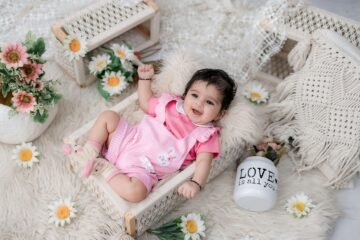
How to Choose the Right Baby Clothes Size: A Complete Guide for Perfect Fit & Comfort
One of the most common questions new parents face, especially when staring at an array of adorable tiny garments, is: “How do I choose the right baby clothes size?” It’s easy to get lost in the sea of “newborn,” “0-3 months,” and “3-6 months” labels, not to mention the fact that every brand seems to have its own sizing quirks! Getting the size right is crucial not just for your baby’s comfort, but also to avoid wasting money on clothes they’ll outgrow in days. This guide will demystify baby clothes sizes and help you choose the perfect fit every time.
Understanding Baby Clothing Size Charts: Beyond the Age Label

Most baby clothing is sized by age ranges (e.g., Newborn, 0-3M, 3-6M), but these are just estimates. Babies grow at different rates, and two babies of the same age can have vastly different weights and lengths. The most accurate way to choose baby clothes size is by focusing on two key measurements:
- Weight (Lbs/Kg): This is usually the most reliable indicator, especially for younger babies. A snug fit around the body ensures comfort and safety, particularly for sleepwear.
- Length (Inches/Cm): Important for bodysuits and sleepers to ensure they’re long enough for your baby’s torso and legs without pulling or bunching.
Always check the size chart provided by the specific brand, as there can be significant variations. What’s a “0-3 months” for one brand might be closer to “newborn” or “3-6 months” for another.
Common Baby Clothes Size Categories Explained

Let’s break down the typical sizing categories you’ll encounter:
- Preemie (P or Premie):
- Weight: Up to 5 lbs (approx. 2.2 kg)
- Length: Up to 17 inches (approx. 43 cm)
- Best for: Babies born prematurely or those with very low birth weights. Only buy a few of these if your doctor advises.
- Newborn (NB):
- Weight: 5-8 lbs (approx. 2.2-3.6 kg)
- Length: Up to 21.5 inches (approx. 55 cm)
- Best for: Full-term babies in their first few weeks. Some babies may even skip this size if they are born larger. Have a few items, but don’t overstock.
- 0-3 Months (0-3M):
- Weight: 8-12.5 lbs (approx. 3.6-5.7 kg)
- Length: 21.5-24 inches (approx. 55-61 cm)
- Best for: Most babies will fit into this size shortly after birth or within a few weeks. This is usually the size to stock up on. Don’t buy too many newborn items.
- 3-6 Months (3-6M):
- Weight: 12.5-16.5 lbs (approx. 5.7-7.5 kg)
- Length: 24-26.5 inches (approx. 61-67 cm)
- Best for: As your baby grows and becomes more active.
- 6-9 Months (6-9M):
- Weight: 16.5-20.5 lbs (approx. 7.5-9.3 kg)
- Length: 26.5-28.5 inches (approx. 67-72 cm)
- 9-12 Months (9-12M):
- Weight: 20.5-24.5 lbs (approx. 9.3-11.1 kg)
- Length: 28.5-30.5 inches (approx. 72-78 cm)
- 12-18 Months (12-18M) and Up:
- Sizes continue to be based on age ranges, but always remember to prioritize weight and length.
Practical Tips for Choosing the Perfect Fit
- Always Check the Brand’s Size Chart: This cannot be stressed enough. A quick look at their specific measurements will save you headaches.
- Size Up, Don’t Size Down: When in doubt between two sizes, always choose the larger one. Babies grow rapidly, and slightly too-big clothes can be rolled up or will fit soon enough. Too-small clothes are simply unusable.
- Consider Your Baby’s Build: Is your baby long and lean, or short and chunky? Some brands cater to different body types. If your baby is consistently between sizes, looking for brands known for specific fits can help.
- Account for Diapers: Ensure there’s enough room for diapers, especially bulkier cloth diapers, as they can add to the fit around the waist and crotch.
- Think About the Fabric: Cotton can sometimes shrink slightly after the first wash, especially if not pre-shrunk. Factor this in when buying. Stretchy fabrics offer more leeway.
- Look for Versatility: Adjustable features like fold-over cuffs and convertible footies can extend the life of a garment as your baby grows.
- Prioritize Comfort: The most important thing is that the clothes are comfortable for your baby to move and play in. Avoid anything too tight or restrictive.
- Don’t Overbuy in Small Sizes: Newborns grow out of clothes incredibly fast. Focus on having a small stash of Newborn size and more of the 0-3 months and 3-6 months.

Choosing the right baby clothes size can feel like a puzzle, but by prioritizing your baby’s actual weight and length over just their age, and keeping these tips in mind, you’ll ensure your little one is always dressed comfortably, safely, and stylishly.



